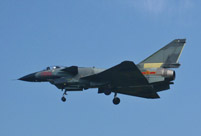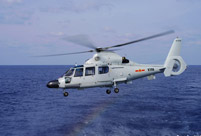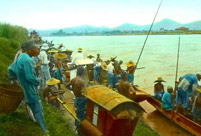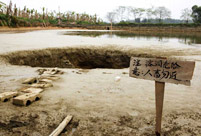

This recent development proves that India has inserted itself smartly into the regional fray, without being a direct party to any confrontation with China. India is looking for alternatives in this game of power balancing without being directly involved with the United States, and this gave them a first glimpse of opportunity. The Indian weapons system is the first one to use Eastern bloc weaponry with the Western weapons primarily used by the Philippines, which will test the interoperability. It will also give a chance to see the ships in tested and volatile waters hunting submarines and providing rapid air lift capability.
But more importantly, it will prove that the Indian government is trying to keep a few cards hidden from sight. India doesn't want to have direct confrontation with China and is also wary of forming a block with U.S., Australia, Japan etc. against balancing China. But Indian help to Vietnam and Philippines gives a glimpse of the thought processes of Indian policy makers on how to approach the issue of power balancing in Asia. India wants to play a traditional offshore balancer role here.
Months earlier, Indian navy and policy makers in New Delhi were brainstorming on how to face current challenges without being a direct party between China and U.S. It seems that for all practical purposes, they have found a policy: to beef up smaller littoral states in areas which are of vital interest to Chinese military. It's a classic Mahanian naval strategy. The only difference is India has areas of vital interest too, and China might do the same if needed.
 |
 The evolution of J-10 fighter
The evolution of J-10 fighter Top 10 Asian beauties in 2016
Top 10 Asian beauties in 2016 What's happening in Xisha Islands?
What's happening in Xisha Islands? When female soldiers meet flowers
When female soldiers meet flowers North Sea Fleet conducts drill in West Pacific Ocean
North Sea Fleet conducts drill in West Pacific Ocean Old photos record the change of Sichuan over a century
Old photos record the change of Sichuan over a century Breathtaking aerial photos of tulip blossoms in C China
Breathtaking aerial photos of tulip blossoms in C China Horrific: Pit swallows 25 tons of fish overnight
Horrific: Pit swallows 25 tons of fish overnight Vietnamese Su-30 fighters fly over Nanwei Island in South China Sea
Vietnamese Su-30 fighters fly over Nanwei Island in South China Sea Top 20 hottest women in the world in 2014
Top 20 hottest women in the world in 2014 Top 10 hardest languages to learn
Top 10 hardest languages to learn 10 Chinese female stars with most beautiful faces
10 Chinese female stars with most beautiful faces China’s Top 10 Unique Bridges, Highways and Roads
China’s Top 10 Unique Bridges, Highways and Roads Arson death video sparks outrage
Arson death video sparks outrage Temple turns itself into a nursing home in fast-aging China
Temple turns itself into a nursing home in fast-aging China Hong Kong Orgasmo Festival to call attention to erotic art and sex
Hong Kong Orgasmo Festival to call attention to erotic art and sex Female expats share their thoughts on violence against women following a recent attack
Female expats share their thoughts on violence against women following a recent attackDay|Week